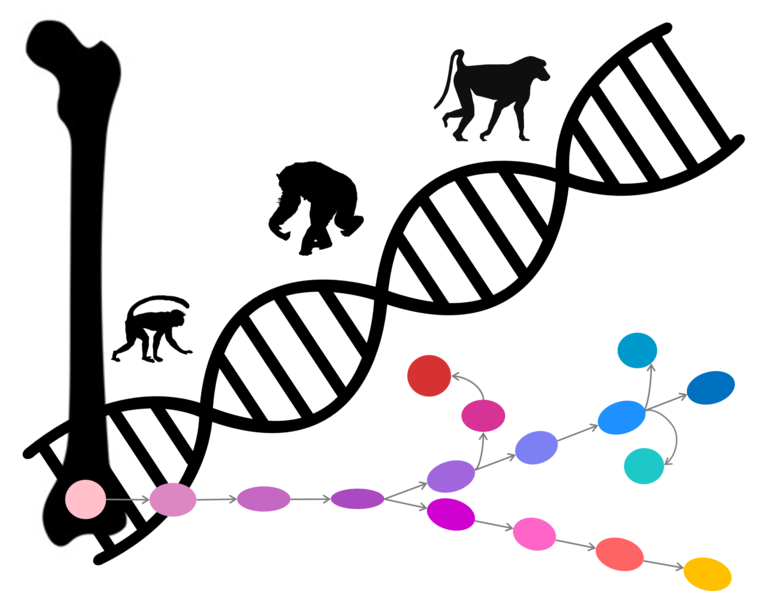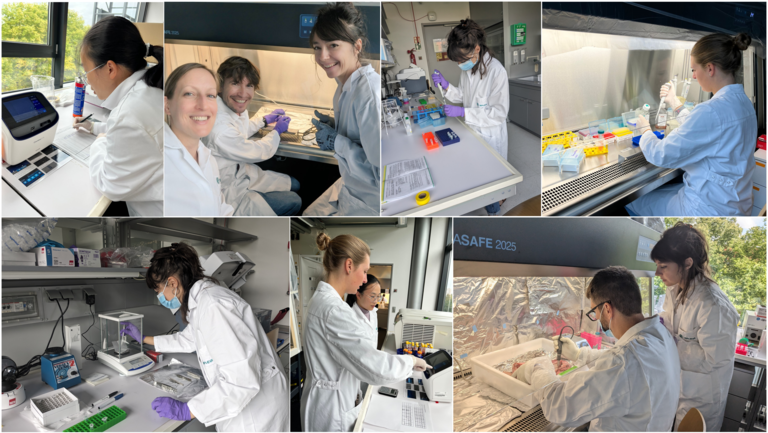Skeletal Genomics (Genevieve Housman)
Description

Our research group studies the functional genomics of complex traits in human and nonhuman primates, with a particular focus on the skeleton. Using laboratory and computational approaches, we examine patterns of gene regulation in primates at population- and evolutionary-scales. We work with primary skeletal tissues to connect bone and cartilage phenotypic variation with underlying molecular variation, and we develop in vitro cell culture systems using primary, immortalized, and pluripotent cell types to characterize regulatory patterns across stages of cell differentiation and in response to controlled environmental perturbations. These efforts aim to clarify the complicated relationship between genotype and phenotype in primate skeletons.
Research Themes
Skeletal cell culture systems

Primates display diverse skeletal morphologies and susceptibilities to skeletal diseases. However, due to the limited availability of skeletal samples appropriate for molecular research, there are relatively few studies that characterize molecular mechanisms associated with complex skeletal phenotypes and even fewer studies that consider the effects of gene by environment interactions in a population or evolutionary context.
In order to examine gene regulation variation in skeletal cell types, assess how these patterns differ within and among primate species, and determine how environmental factors impact phenotypes, we develop and work with comparative primate skeletal cell culture models, primarily focusing on osteogenic (bone) and chondrogenic (cartilage) cells.

In addition to characterizing static patterns of gene regulation in skeletal cell types, we also examine regulatory dynamics in different environmental contexts to better understand functional genomic landscapes. Environmental contexts include skeletal-relevant external exposures, such as mechanical strain and inflammatory cytokine treatments (which can also serve as in vitro models of osteoarthritis), and developmental states as cells progress through differentiation trajectories.
Genomics in the skeleton

Variation in the skeletal anatomies of primates is often used to reconstruct extinct primate species and to support theories on primate phylogenetic and evolutionary history, and the manifestations of skeletal pathogies are often used to glean details about lived experiences. However, the molecular mechanisms contributing to these hard tissue phenotypes are not fully characterized.
We attempt to bridge the gap between phenotype and genotype in the skeleton by collecting high-resolution morphological and pathological trait data and genomic data from opportunistically collected primate skeletal samples.
Primate functional genomics

Complex trait variation across primates results from a combination of genetic and environmental factors, but identifying and characterizing the molecular mechanisms that mediate these effects can be challenging due to the ethical and experimental considerations, storage and cell heterogeneity complications, and uncontrolled environmental variables encountered when working with primary tissues from primates.
As an alternative to primary tissues, we work with and develop cell culture systems derived from primates, especially pluripotent systems that can be differentiated into many cell types and maintained in controlled environments, which provide a unique opportunity to expand primate functional genomics research.
Photos from the Lab

Staff
Gruppenleiter:in
Postdocs
Christian Gagnon
Doktorand:in
Technische:r Mitarbeiter:in
Forschungsassistent:innen
Jenny Busch
Michelle Roderer


